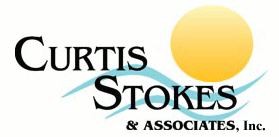Call Us: 855.266.5676 | 954.684.0218
Email Us: info@curtisstokes.net 
Call Us: 855.266.5676 | 954.684.0218
Email Us: info@curtisstokes.net 
by Jim Healy
I am a strong advocates of cruisers having paper charts aboard. This article describes how we accomplished that for our Great Loop cruise. This article focuses on paper charts and print Cruising Guide resources, not on the many available electronic resources.

Generally, I recommend the Richardson’s chart books for the rivers and Great Lakes and the Maptech Chartkits for the US East Coast. These chart books cost only a small fraction of the price of individual charts and the chart books are far easier to handle than individual NOAA charts. At the 2007 AGLCA Penetenguishine Rendezvous, one of the presenters recommended that the group run right out and get the official Canadian Hydrologic Service (CHS) paper charts for the Georgian Bay and North Channel. Sanctuary and crew had not planned to do that, and of course, the stampede that presentation created caused the local chandlery to run out of charts almost immediately; definitely before we got there. That was fortuitous for us, in hindsight.
We used the Richardson’s “Lake Huron” book, and we had absolutely no problems at all. We found that the level of the water in both Lake Huron and Lake Michigan (Richardson’s “Lake Michigan” book) were almost exactly at chart datum in 2007. Although there is a lot of discussion about the Lake datum levels being low, apparently the lakes were also low when they were charted. For us in 2007, the chart soundings were correct and reliable for use as-is.
One recommendation we do make is to mark your Richardson’s chart books ahead of time with significant navigation and marker information. The Richardson chart books are printed in shades of gray. We used green, yellow and red florescent markers to highlight all channel markers (yellow for the Canadian system “Cardinal” markers). I also took a red pencil-point marker and highlighted the red “preferred channel” lines on the CHS charts. They represent the “small boat channel.” Read the notes that Richardson’s published on the CHS charts. One thing you discover is that the arrows on the “preferred channel” lines tell you which side the markers are on. If you are headed in the direction of the arrows, it’s “red-right-returning.” That’s very helpful to know, since you’ll be on multiple “preferred lines” as you travel the canals, Georgian Bay and the North Channel, and some will be opposite your direction of travel.
All “Skipper Bob” books should be considered mandatory. There is nothing else as simple and concise to use.
The “Great Lakes” Edition of The Waterway Guide is the best overall coverage of the Great Loop in one book. It coverage of the Cumberland and Tennessee river systems was sparse in 2007. You may also want the “Southern,” “Atlantic ICW” and “Chesapeake Bay” editions of the Waterway Guides for regional coverage. If you cruise directly from New Jersey into New York Harbor and north on the Hudson River, you do not need the “Northern” Edition. If you plan to cruise Long Island Sound, however, the “Northern” Edition will be very useful.
The New York State Canal Corp publishes an excellent “Cruising Guide for the NYS Canal System.” We recommend it. If you get that cruising guide, you do not need the NOAA book of charts for the Erie Canal. The NOAA book contains official NOAA navigation charts, but the NYS guide shows all the navigation marker information you need, gives substantial local point-of-interest information plus bridge heights, pool levels, lock phone numbers, etc. For me, the value for the money was with the NYS guide book. We never opened the NOAA chart book.
There is an excellent regional book called a “Cruising Guide to the Hudson River, Lake Champlain & the St. Lawrence River” which I highly recommend. A new edition was published carrying a 2006 date, and it has a blue cover. It covers the waterways from NYC to Montréal (west) and Québec City (east), including the Richelieu River and Chambly Canal. It’s excellent!
In Canada, there are several guide books published by Lakeland “Ports-‘o-Call.” They are excellent, focus on Canadian shoreline communities, have overhead pictures of anchorages and channels, as well as lots of interesting local points-of-interest information. Look for these on the Internet, and decide what coverage you want. They may be available locally on the loop, but you can’t depend on that.
For each of the Great Lakes, in the US, there are PORTS guides (referred to by locals as “the PORTS book”). They are similar to the Canadian books, but focus on the US shore line communities. They contain excellent local points-of-interest information and overhead pictures of anchorages. As above, look for these on the Internet before you depart.
For the inland river system, we used the collection of chart books published by the Army Corps of Engineers (USACE). There are chart books for each of the river in the inland river system.
By Jim Healy from his Blog Travels of the Monk 36 Trawler, Sanctuary
Disclaimer: Curtis Stokes and Associates does not necessarily agree or promote the content by the above author. This content is to be used only with the reader’s discretion.

© 2024 Curtis Stokes & Associates, Inc. | All rights reserved.